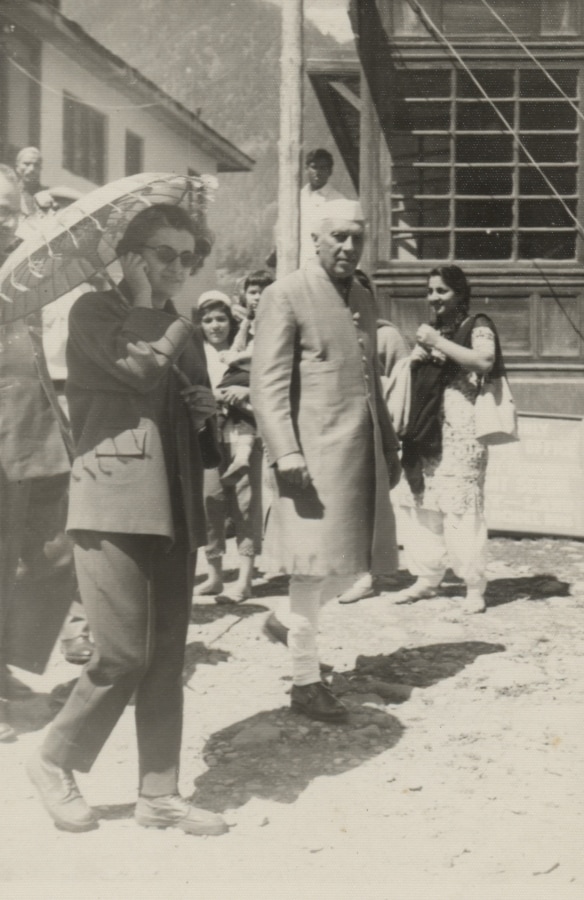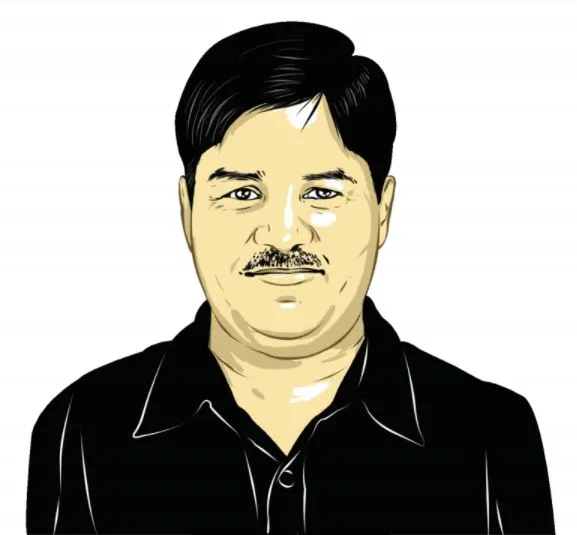Opinion When Nehru visited Pahalgam: Story of first PM’s last vacation
Nehru travelled to Pahalgam with his daughter Indira Gandhi in June 1963, at a time when his political difficulties were mounting and his health was failing. He was on vacation, but he did some political work as well
 Jawaharlal Nehru standing with Indira Gandhi in Pahalgam in Kashmir in June 1963. (PMML, accessed from the Prime Minister’s Secretariat. Full image inside)
Jawaharlal Nehru standing with Indira Gandhi in Pahalgam in Kashmir in June 1963. (PMML, accessed from the Prime Minister’s Secretariat. Full image inside) Pahalgam, where terrorists backed by Pakistan killed 26 innocent civilians last month, provoking India’s Operation Sindoor, has an interesting connection with Pandit Jawaharlal Nehru, the nation’s first Prime Minister.
 Eleven months before his demise in May 1964, Nehru spent 10 days on holiday at this beautiful tourist site in Jammu and Kashmir, accompanied by his daughter Indira Gandhi. This was Nehru’s last holiday.
Eleven months before his demise in May 1964, Nehru spent 10 days on holiday at this beautiful tourist site in Jammu and Kashmir, accompanied by his daughter Indira Gandhi. This was Nehru’s last holiday.Pahalgam was already a favoured retreat for tourists at the time. Accessible by road even before Independence, it attracted both Europeans and Indians. In his 1943 book Kashmir: The Playground of Asia, Sachchidananda Sinha wrote glowingly of Pahalgam, unmatched for its “grand mountain scenery, transport facilities, camping, fishing, and bracing climate”.
Sinha also mentioned Baisaran, a two-mile trek through pine forests, the valley where the Pakistan-backed terrorists struck on April 22.
A vacation, and some political work
Nehru’s retreat in June 1963 came at a tumultuous time, as the Prime Minister grappled with mounting political challenges, his deteriorating health, and the aftermath of the 1962 war with China.
Nehru reached Srinagar on June 18, 1963. He was accompanied by Indira and his two grandsons, Rajiv Gandhi and Sanjay Gandhi, then 18 and 16 years old respectively.
The family stayed at the Guest House Chashme Shahi in Srinagar. On the morning that he reached Srinagar, Nehru held a meeting over tea at the Guest House with state Ministers, the Speaker and Deputy Speaker of the state Assembly, and the Legislative Council Chairman.
While in Srinagar, Nehru addressed workers of the National Conference. The Prime Minister said that a China-Pakistan alliance would not be helpful in Kashmir for Pakistan.
From Srinagar, Nehru went to Pahalgam, about 90 km away. There, the Prime Minister mostly stayed away from political activities.
However, on June 21, Nehru wrote to Neelam Sanjiva Reddy, the Chief Minister of Andhra Pradesh, assuring him that certain rumours circulating at the time that he (Reddy) would be removed from his post, were baseless. Nehru wrote to Reddy that he was sorry for the rumours.
Nehru also had a meeting in Pahalgam with Biju Patnaik, the Chief Minister of Orissa (Odisha), who met him there on June 24, apparently to discuss a planned reshuffle of the Cabinet.
 Jawaharlal Nehru standing with Indira Gandhi in Pahalgam in Kashmir in June 1963. PMML, accessed from the Prime Minister’s Secretariat
Jawaharlal Nehru standing with Indira Gandhi in Pahalgam in Kashmir in June 1963. PMML, accessed from the Prime Minister’s Secretariat
On June 26, Nehru visited the Aru valley, about 12 km from Pahalgam. He also visited the Kolahoi Glacier, the main source of the Lidder river, the tributary of the Jhelum that flows through Pahalgam.
Nehru returned to Delhi on June 28, The Indian Express reported in its edition dated June 29, 1963.
In Srinagar, Sadr-e-Riyasat Dr Karan Singh and Jammu and Kashmir Prime Minister Bakshi Ghulam Mohammad saw him off. In Delhi, the PM was welcomed at the airport by dignitaries including Finance Minister Morarji Desai, Home Minister Lal Bahadur Shastri, Food and Agriculture Minister S K Patil, Scientific Research and Culture Minister Humayun Kabir, and Cabinet Secretary S S Khera.
A difficult time for Nehru
Even as Nehru was away in Jammu and Kashmir, his political difficulties were mounting. Things got worse after he returned.
On June 26, when he was in Jammu and Kashmir, his Minister for Irrigation and Power Hafiz Mohammad Ibrahim and Minister for Mines K D Malaviya had resigned. Upon landing at Delhi’s Palam Airport, Nehru was asked by reporters about the resignations and the impact on his Cabinet.
Nehru replied, “Steps have been taken to manage the portfolios of the resigned ministers. Nobody is in a hurry at present [for an expansion of the Cabinet].”
In January-February 1962, Nehru’s Congress party had secured a third term in power, winning 361 out of 494 seats in Lok Sabha. However, the India-China war later that year was a major setback for the Prime Minister, which compounded his struggles with his health.
In August 1963, his government faced its first no-confidence motion, moved by Gandhian and former Congress chief J B Kripalani.
Amid concerns about his legacy and succession, Nehru initiated the Kamaraj Plan in September 1963, proposed by K Kamaraj. Under this plan, Union ministers and Chief Ministers were to resign, allowing Nehru to reorganize the Congress party and government structures at the Centre and in the states. Many of those who lost their importance in the party and government were upset. Kamaraj was appointed Congress president soon afterward.
Nehru’s health was failing all the time, and in January 1964, during the AICC session in Bhubaneswar, the Prime Minister fell seriously ill. He passed away on May 27, 1964.






